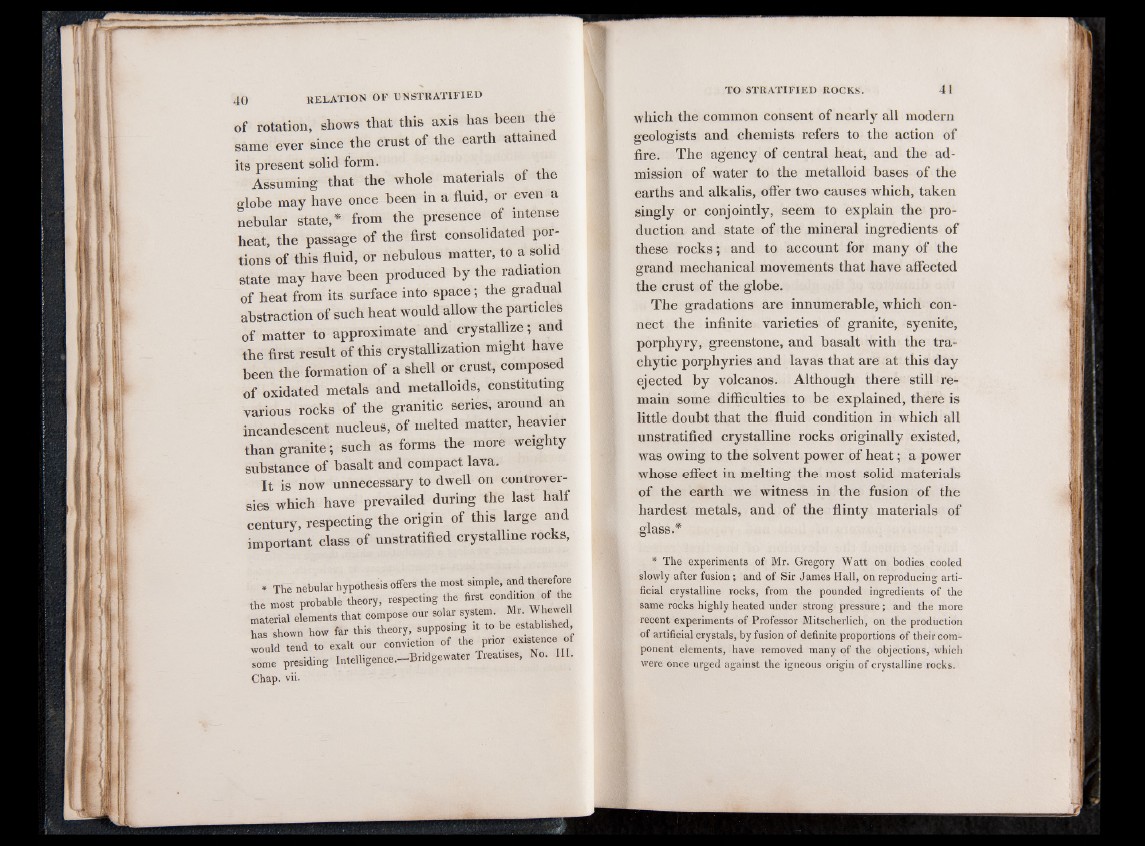
of rotation, shows that this axis has been the
same ever since the crust of the earth attained
its present solid form.
Assuming that the whole materials ot the
globe may have once been in a fluid, or even a
nebular state,* from the presence of intense
heat, the passage of the first consolidated portions
of this fluid, or nebulous matter, to a solid
state may have been produced by the radiation
of heat from its surface into space ;• the gradua
abstraction of such heat would allow the particles
of matter to approximate and crystallize; and
the first result of this crystallization might have
been the formation of a shell or crust, composed
of oxidated metals and metalloids, constituting
various rocks of the granitic series, around an
incandescent nucleus, of melted matter, heavier
than granite; such as forms the more weighty
substance of basalt and compact lava.
It is now unnecessary to dwell on controversies
which have prevailed during the last half
century, respecting the origin of this large and
important class of unstratified crystalline rocks,
* The nebular hypothesis offers the most simple, and therefore
the most probable theory, respecting the first condition of the
material elements that compose our solar system. Mr' ^ hewe l
has shown how far this theory, supposing it to be established,
would tend to exalt our conviction of the prior existence of
some presiding Intelligence.-Bridgewater Treatises, No. III.
Chap. vii.
which the common consent of nearly all modern
geologists and chemists refers to the action of
fire. The agency of central heat, and the admission
of water to the metalloid bases of the
earths and alkalis, offer two causes which, taken
singly or conjointly, seem to explain the production
and state of the mineral ingredients of
these rocks; and to account for many of the
grand mechanical movements that have affected
the crust of the globe.
The gradations are innumerable, which connect
the infinite varieties of granite, syenite,
porphyry, greenstone, and basalt with the tra-
chytic porphyries and lavas that are at this day
ejected by volcanos. Although there still remain
some difficulties to be explained, there is
little doubt that the fluid condition in which all
unstratified crystalline rocks originally existed,
was owing to the solvent power of heat; a power
whose effect in melting the most solid materials
of the earth we witness in the fusion of the
hardest metals, and of the flinty materials of
glass.*
* The experiments of Mr. Gregory Watt on bodies cooled
slowly after fusion ; and of Sir James Hall, on reproducing artificial
crystalline rocks, from the pounded ingredients of the
same rocks highly heated under strong pressure; and the more
recent experiments of Professor Mitscherlich, on the production
of artificial crystals, by fusion of definite proportions of their component
elements, have removed many of the objections, which
were once urged against the igneous origin of crystalline rocks.